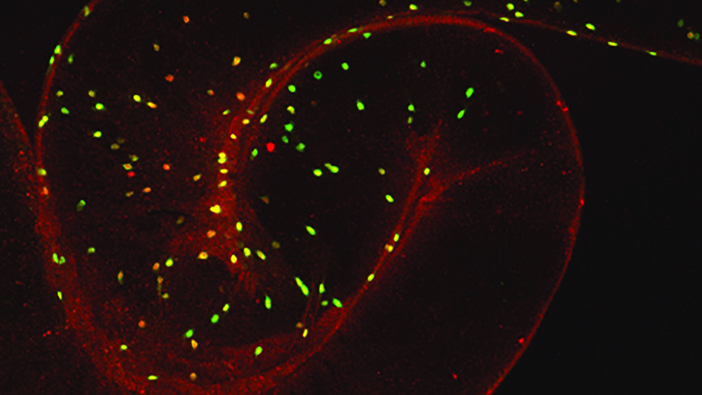Researchers show how hormones control aging in flies, and how it relates to human biology.
Scientists now know how a gut hormone can impact the lifespan of fruit flies—and say their findings offer clues to how humans age, too.
For the past two decades, study author Marc Tatar, PhD, a professor of biology affiliated with Brown’s Center on the Biology of Aging, has studied how insulin and insulin-like growth factors control aging in flies.
“We know that reducing insulin, and reducing IGF signaling, slows aging and extends lifespan in flies,” Tatar says.
Researchers in his lab have been looking at an insulin-regulatory hormone in flies called neuropeptide F that is produced in the gut and secreted into circulation in response to diet. For the new study, published in PNAS, they used genetic tools to reduce the ability of fly intestines to secrete NPF and therefore reduce insulin secretion. Then they mapped the production of NPF in the flies from the gut to the brain to a pituitary-like tissue, and connected this all back to diet.
They found that suppression of NPF extends longevity in flies, as does blocking the NPF receptors in the brain that control another molecule called juvenile hormone. The researchers concluded that NPF modulates aging of flies through the integration of nutrient sensing, insulin signaling, and juvenile hormone production.
“We showed how all of these things work together to control lifespan,” Tatar says.
His team now wants to understand what happens when they increase NPF secretion, and therefore insulin, in flies. “We suspect that over-production of gut NPF in flies will have a negative effect on aging and decrease lifespan,” he says.
Flies and humans have many of the same genes, and humans have analogous hormones that are involved in similar processes and pathways. While we don’t make NPF or juvenile hormone, we do make insulin, and secrete gut hormones that regulate the production of insulin, such as pancreatic polypeptide Y and glucagon-like peptide-1. GLP-1 is in the same family of hormones as NPF; they’re both called incretins because they can increase the secretion of insulin.
There has been an explosion of research on GLP-1 agonists, which mimic the incretin GLP-1 in humans and trigger the release of insulin in the pancreas. Tatar’s team concluded that given how GLP-1 drugs like Ozempic and Wegovy are used to treat diabetes and obesity, and given what they’ve found about the relationship between insulin and aging in files, it may be time to consider how they could affect human aging.
“The fly is an excellent model for humans, but we need to progress the research from flies to mice and set up studies that look at GLP1-agonists and aging,” Tatar says. “It will take years, but it’s important.”




